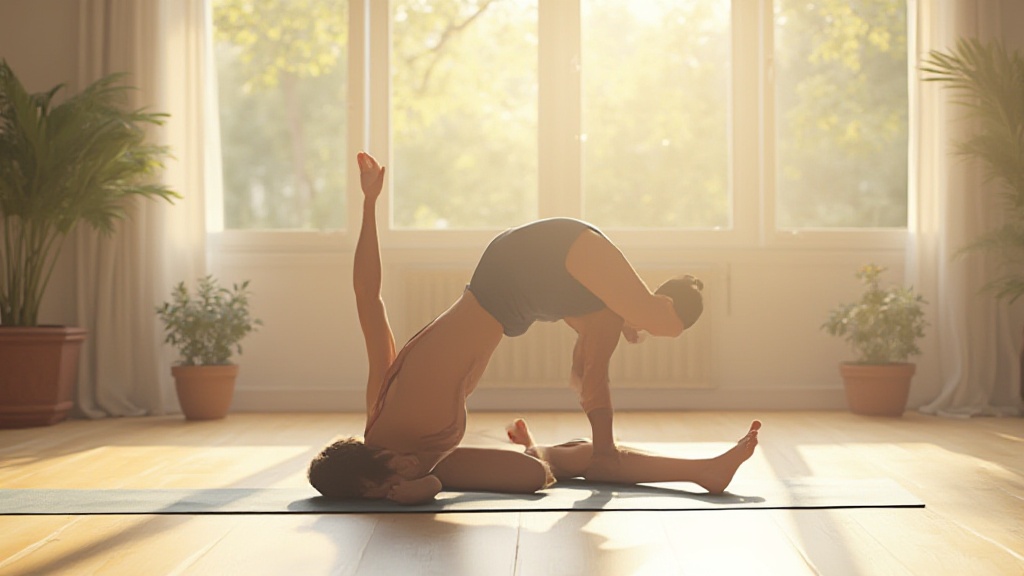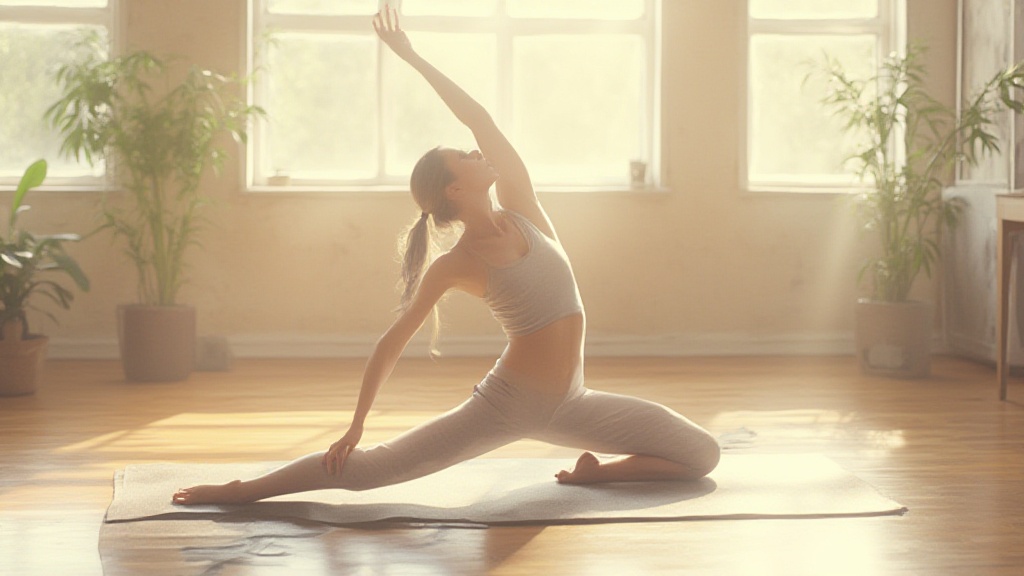
Flexibility significantly affects daily activities, influencing everything from athletic performance to routine movements. Integrating stretching exercises into your regimen can enhance mobility and functionality.
These exercises not only improve joint health but also contribute to injury prevention by promoting muscle elongation.
Individuals who engage in flexibility training frequently observe a remarkable enhancement in their overall movement.
By adhering to a consistent stretching regimen, you can experience substantial improvements in your physical capabilities and everyday life.
Benefits of Flexibility Training
Incorporating flexibility training into daily routines offers numerous advantages, including an enhanced range of motion. Regular stretching leads to increased athletic performance, allowing individuals to execute movements with greater efficiency.
Flexibility is essential for injury prevention, as improved muscle elasticity mitigates the risk of strains and injuries. Making a point to include flexibility exercises in your daily activities fosters a seamless integration of other forms of physical training.
Key Advantages of Flexibility Training
- Supports muscle recovery and reduces muscle tension.
- Improves overall physical health benefits, enhancing well-being.
- Facilitates joint mobility and promotes functional movement.
“Flexibility training not only aids in recovery phases but also enhances athletic performance and mindbody connection. ”
Over time, prioritizing flexibility training yields tangible results, promoting both physical health and emotional well-being. The benefits extend beyond athletic contexts, impacting various aspects of daily life and contributing positively to one’s overall wellness.

How Does Dynamic Stretching Work?
Dynamic stretching serves as an effective warm-up technique, enhancing muscle readiness for more intense physical activity. This specific form of stretching increases blood flow to muscles, thereby boosting oxygen supply significantly.
Athletes can engage in dynamic stretches, such as leg swings and arm circles, to improve their range of motion effectively.
These movements not only prepare the muscles but also enhance athletic performance while reducing injury risks simultaneously.
Throughout this process, physiological changes, including muscle elongation and increased heart rate, prepare the body for rigorous workouts, making dynamic stretching indispensable in any fitness regimen.
Examples of Dynamic Stretches
Incorporating dynamic stretching exercises into warm-up routines can greatly enhance flexibility training. For instance, performing high knees and butt kicks engages multiple muscle groups, helping athletes achieve better mobility and coordination.
Utilizing these stretching techniques effectively can lead to improved overall sports performance and help in achieving fitness goals.
Importance Of Static Stretching
Static stretching holds significant importance in post-workout recovery strategies, facilitating muscle relaxation and lengthening. By holding stretches for at least 15-30 seconds, athletes can alleviate muscle tension, significantly contributing to overall muscle recovery.
Incorporating flexibility routines into cooldowns promotes joint health and helps prevent stiffness after intense workouts.
Emphasizing major muscle groups, such as hamstrings and quadriceps, allows for effective elongation and enhances flexibility improvement.
Effective Static Stretching Techniques
Utilizing recommended stretching techniques can enhance the outcomes of static stretching.
Engaging in therapeutic stretching and utilizing tools like foam rollers can further aid in muscle recovery. Regularly incorporating these methods can lead to improved overall flexibility over time, supporting long-term athletic performance and reducing injury risks during future activities.
Stretching Techniques
- Dynamic stretching can increase muscle blood flow by up to 20%, enhancing performance during workouts.
- Static stretching, when held for 15-30 seconds, can reduce muscle soreness by up to 30% post-exercise.
- Incorporating dynamic stretches like leg swings can improve range of motion by approximately 10% before activities.
- Regular use of foam rollers in static stretching routines can enhance muscle recovery and flexibility by 15-25% over time.
Enhancing Joint Health Through Stretching
Joint health plays a significant role in maintaining overall mobility and quality of life. Stretching promotes flexibility and alleviates stiffness, which contributes to improved joint function.
Regular stretching routines can enhance your range of motion and assist in injury prevention.
Incorporating effective stretches can significantly benefit joint health, including:.
- Hamstring Stretch: This stretch reduces lower back tension.
- Shoulder Stretch: Supports shoulder mobility and flexibility.
Making stretching a daily practice can lead to remarkable improvements in your physical well-being. Daily engagement in these exercises fosters a greater sense of movement and comfort, ultimately benefiting your quality of life.
Benefits of Stretching for Joint Health
Stretching enhances muscle recovery and promotes muscle tension relief. By integrating stretching into your fitness regimen, you can experience:
- Improved Flexibility: Enhanced range of motion allows for better functional movement.
- Increased Blood Flow: Enhanced circulation supports joint health.
- Reduction in Stiffness: Regular stretching can decrease discomfort, especially in the morning.
Effective Stretching Routines For Beginners
Establishing a flexibility training routine does not have to be complicated. To create a personalized fitness plan, consider starting with simple stretches that can be performed in the comfort of your home. Try these foundational stretches:.
Neck Stretch: Gently tilt your head to each side, holding for 15-30 seconds.
Quadriceps Stretch: Stand on one foot while pulling the opposite ankle toward your glutes, maintaining balance.
Consistency is essential to achieving long-term results. Aim to incorporate these stretching routines into your daily schedule, allowing for a gradual progression toward your flexibility goals. With regular practice, you will likely notice improvements in both flexibility and overall joint health.
Stretching for Joint Health
- Regular stretching can improve joint flexibility by up to 30%.
- Studies show that individuals who stretch daily report a 50% reduction in joint stiffness.
- Stretching before and after exercise can decrease the risk of injuries by 40%.
- Increased blood flow from stretching can enhance nutrient delivery to joints, promoting better health.
Can Stretching Improve Muscle Recovery
Incorporating stretching into your routine significantly enhances muscle recovery. Physiologically, stretching promotes blood circulation, which aids in nutrient delivery and waste removal, essential for recovery.
Reduced soreness is another benefit linked to effective stretching exercises, helping to alleviate muscle tension.
Maximizing recovery time after intense workouts is crucial for overall training effectiveness.
Static stretching, often used post-workout, can effectively elongate muscles, while dynamic stretching serves as a precursor to engage muscles effectively. To optimize recovery, timing your stretching techniques post-workout is important, reinforcing the significance of cooldown routines in your fitness regimen.
Exploring Active Vs Passive Stretching
The differentiation between active and passive stretching is vital for meeting various training goals.
Active stretching, incorporating movements like leg swings and dynamic motions, enhances flexibility and prepares muscles for activity. Conversely, passive stretching utilizes external forces, such as a partner or gravity, to achieve deeper stretches, promoting relaxation and an increased range of motion.
Benefits for Athletes
Athletes benefit from active stretching during warm-ups, as it boosts performance and aids in injury prevention.
Engaging in active flexibility training prepares muscles for the demands of competition, fostering improved athletic performance.
Benefits for Fitness Enthusiasts
For general fitness enthusiasts, passive stretching is advantageous for post-workout recovery, offering muscle tension relief and facilitating relaxation.
Incorporating both methods into routines allows for a balanced approach, addressing both muscle recovery and overall flexibility improvement.
Integrating both active and passive stretching techniques provides comprehensive benefits for individuals pursuing various fitness goals.
| Stretching Type | Benefits |
|---|---|
| Static Stretching | Enhances muscle elongation and reduces soreness post-workout |
| Dynamic Stretching | Prepares muscles for activity and improves flexibility |
| Active Stretching | Boosts performance and aids in injury prevention for athletes |
| Passive Stretching | Facilitates relaxation and increases range of motion |
Tips For A Successful Stretching Regimen
Establishing clear fitness goals is essential for implementing a successful stretching regimen. Specific objectives not only measure flexibility improvements but also help maintain motivation throughout your journey.
Consistency in your stretching routine is crucial; regular practice enhances flexibility training, ensuring that gains become long-term.
Incorporating dynamics stretching and proper technique prevents injuries while maximizing the benefits of your regimen.
Setting and Achieving Fitness Goals
Fitness goals should be realistic and tailored to your personal needs. Consider setting short-term targets that offer immediate rewards, as these can significantly enhance your commitment.
Engaging with a partner or a community can further bolster your motivation, resulting in a deeper commitment to a healthier lifestyle. Flexibility improvement is not solely about achieving splits or touching toes; it is also about enhancing overall athletic performance and daily functionality.
The Importance of Consistency and Technique
To achieve lasting results, consistency is key in any stretching routine.
Regular practice helps reinforce muscle recovery and improves the range of motion.
Utilizing proper techniques, such as active stretching and passive stretching, can significantly reduce the risk of injury.
Adopting cooldown routines after workouts not only enhances muscle tension relief but also aids in facilitating postworkout recovery.
Motivational Strategies to Maintain a Stretching Routine
Incorporate mindfulness in your movement to strengthen the mind-body connection. This approach fosters better awareness of your body, allowing you to listen to its needs effectively.
Implementing flexibility workshops or utilizing online resources can introduce new techniques, keeping your routine fresh and engaging. Flexibility assessment can provide measurable insights into your progress, reinforcing your commitment to ongoing flexibility improvement.
Conclusion
By focusing on these elements—setting clear fitness goals, ensuring consistency in your stretching routine, and utilizing motivational strategies—it is possible to cultivate a successful regimen.
Each component plays a significant role in enhancing your overall physical health and achieving your desired results.
Stretching Regimens
- Regular stretching can improve flexibility by up to 30% over a few months of consistent practice.
- Studies show that incorporating dynamic stretching before workouts can reduce the risk of injury by 50%.
- Mindfulness practices during stretching can enhance the mind-body connection, leading to better performance and recovery.
- Setting short-term fitness goals can increase adherence to a stretching routine by 70%, according to fitness research.
